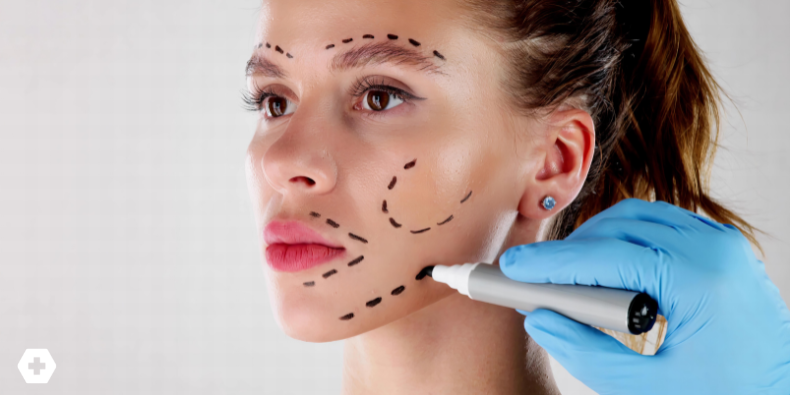
The Complications of Plastic Surgery Tourism: What Clinicians Need to Know

Aesthetic surgery is booming. Data from the last year show a 14% increase in total procedures, driven largely by a 23% rise in nonsurgical interventions and dramatic gains in body contouring. Liposuction procedures increased by 63%, abdominoplasty by 55%, and overall U.S. spending on aesthetics exceeded $11.8 billion, up 2% from the previous year.
Alongside this surge, clinicians are seeing a parallel trend: an increasing number of patients presenting to the ED with complications from both domestic office-based procedures and medical tourism abroad.
The Growing Business of Surgical Tourism
Patients travel for plastic surgery for many reasons—cost savings, privacy, shorter wait times, and the appeal of combining a procedure with a vacation. But the medical consequences can be severe.
Several studies have documented higher morbidity and mortality among patients who undergo surgery abroad, most often related to inadequate postoperative monitoring. Complications such as infection, uncontrolled pain, wound dehiscence, and poor aesthetic outcomes usually manifest after patients return home, leaving local clinicians to manage the sequelae. Hospital admissions, operative interventions, and prolonged wound care from complications can drive costs as high as $26,000–$154,000—often exceeding what the patient saved by traveling in the first place.
Miami: A Case Study in Volume and Risk
In markets like Miami, where cosmetic surgery is both common and competitively priced, the ED sees daily consequences of this trend. Office-based surgical centers—many of which are owned by corporate groups—offer discounted procedures and market them aggressively on social media. Patients are promised painless, same-day transformations with minimal downtime. These centers typically discharge patients within hours and offer little to no follow-up.
Many of these procedures would normally involve a short hospital stay postoperatively; however, one study found that only 26% of patients receive a postoperative appointment with the office-based surgical centers. Surgeons are often contracted to complete as many cases per day as possible, creating the perfect storm for complications and fragmented postoperative care.
Common Procedures and Associated ED Presentations
|
Procedure |
Typical ED Issues |
|
Liposuction |
Infection, fat embolism syndrome, seroma, lidocaine toxicity |
|
Abdominoplasty |
Seroma, wound dehiscence, VTE, skin necrosis |
|
Mammoplasty (augmentation/reduction) |
Hematoma, prosthetic infection, implant rupture |
|
Autologous Gluteal Augmentation (BBL) |
Fat embolism, deep infection, tissue necrosis |
|
Injectables/fillers |
Foreign body granulomas, abscesses, and unregulated material reactions |
Infections: Superficial vs. Deep
Superficial surgical site infections (SSIs) resemble cellulitis and can be treated empirically with cefazolin, ceftriaxone, doxycycline or clindamycin. Deep infections involve fascia or implant spaces and may mimic necrotizing infection. These cases warrant broad-spectrum IV antibiotics (e.g., vancomycin or linezolid plus piperacillin-tazobactam, a carbapenem, or ceftriaxone + metronidazole) and early surgery consultation.
Fluid Collections and Seromas
Fluid collections are among the most common postoperative findings. Incidence varies from 3%–15% after abdominoplasty to <6% after breast augmentation.
Categories include:
-
Seroma: Typically benign and most often will resolve within 1-2 months without intervention. Some surgeons will opt to drain them for cosmetic purposes.
-
Hematoma: Usually within 24-48 hours of surgery; large or expanding collections may need evacuation, otherwise they are managed conservatively.
-
Abscess: Requires drainage and antibiotics.
-
Foreign material reaction: Seen after fillers or fat grafting; may present with induration or plaques. Typically, these patients will require surgical follow-up.
-
Implant rupture: Suspect with peri-prosthetic fluid; confirm via MRI (preferred) if the patient is stable, as CT and U.S. have around 42% sensitivity. At a minimum, talk with the surgical team to let them know you have a concern for a ruptured prosthesis.
VTE: The Leading Cause of Postoperative Death
Venous thromboembolism (VTE) remains the number one cause of mortality after cosmetic surgery, accounting for up to 21% of postoperative deaths. Risk is highest in abdominoplasty, where DVT and PE rates reach 0.8% and 1.3%, respectively. Prolonged procedures, intraoperative positioning (hip flexion), and postoperative inactivity all contribute. For ED providers, any post–cosmetic surgery patient with dyspnea, chest pain, or leg swelling should be presumed at risk until proven otherwise.
Fat Embolism Syndrome (FES)
FES is a rare but devastating complication, especially after liposuction and BBL. It is believed that all liposuction patients experience some degree of fat microembolism; however, clinically significant FES carries a 10%–15% mortality rate.
Classic triad:
-
Respiratory distress (tachypnea, hypoxia, ARDS-like picture)
-
Neurologic changes (confusion → coma; precede respiratory symptoms by 6–12 hours)
-
Petechial rash (head, neck, chest, axilla; present in ~50%)
Diagnosis is clinical. CT and V/Q scans cannot differentiate FES from thromboembolic PE. MRI may reveal diffuse ischemic cerebral changes, but it is adjunctive only. Management is supportive: oxygen, fluids, ventilatory support as needed. Anticoagulation is not indicated.
Wound Dehiscence and Skin Necrosis
Skin necrosis (3%–4%) and wound dehiscence (≈0.75%) are difficult complications that may require debridement, antibiotics, or hyperbaric oxygen therapy. Necrosis is particularly associated with fat grafting, where transplanted fat may induce local inflammation and tissue destruction. ED care centers on pain control, infection surveillance, and early consultation for potential debridement.
Lidocaine Toxicity in Tumescent Liposuction
Tumescent liposuction uses dilute lidocaine at doses up to 35–65 mg/kg (vs. 7 mg/kg in standard local anesthesia). Systemic toxicity is rare due to slow absorption and partial removal during aspiration, but it can occur.
Early Signs of Local Anesthetic Systemic Toxicity (LAST):
-
Circumoral numbness, metallic taste
-
Tinnitus, lightheadedness, confusion
-
Progression to seizures or cardiac arrhythmia
Management follows standard LAST protocol: stop infusion (if applicable), airway support, benzodiazepines for seizures, and lipid emulsion therapy if severe.
The Takeaway
The explosion of cosmetic surgery—both domestic and abroad—has introduced a predictable influx of postoperative complications into emergency departments. As front-line clinicians, we must recognize the clinical patterns unique to aesthetic surgery complications, when to escalate for surgical evaluation or imaging, and how to distinguish expected postoperative findings from emerging pathology. Patients may seek a “vacation body,” but many return with complications that demand vigilance, evidence-based care, and multidisciplinary follow-up.
Practice-Changing Education
Experience education that goes beyond theory. Explore Hippo Education’s offerings below.

